armed forces
While war rages in the Middle East and Europe, Canada’s military is less capable than ever
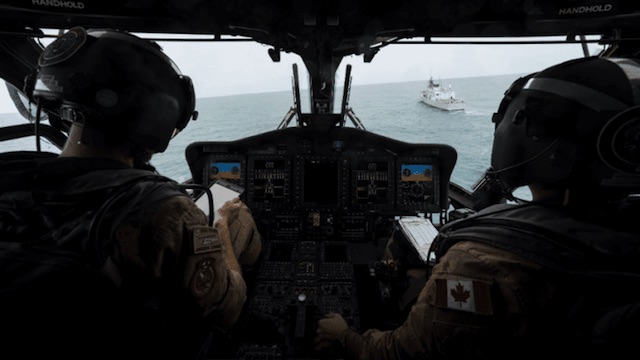
From the MacDonald Laurier Institute
By Richard Shimooka
There are no good solutions to this problem, only less bad alternatives.
Over a decade ago, I had the opportunity to interview Jim Judd, the former deputy minister of national defence. After all these years, one quote still sticks out to me:
People assume because DND has 60,000 personnel and a budget of 12 billion dollars it should be able to do something, but there are quite severe practical limitations to its capability. In my view, it was not all that well understood outside of military circles.
Judd’s comment seems even more relevant today than it was eleven years ago. The ongoing Russian war in Ukraine, Chinese aggression in the West Pacific, and now the brutal incursion by Hamas into Israel from Gaza have stripped away any facade that the international system will be more peaceful or stable than in the 20th century. For most major liberal democracies, these events have shaken the complacency that has prevailed since the end of the Cold War: that is except for Canada. The recent announcement that the defence department will need to shoulder a $1 billion dollar budget cut over the next three years clearly illustrates the lack of awareness of this government on the international moment.
Yet, like Judd’s comment, there is little understanding amongst the public of how the military functions, and the consequences of these cuts are critical. While many may be dimly aware that the armed forces are facing a challenging situation, the actual details and the future outcome are only known to a precious few. This article will try to address that.
What will become apparent is that political decisions have simultaneously over-deployed the Canadian Armed Forces (CAF) while neglecting to invest in its capabilities. This has upset the fragile sustainment system, leaving its actual operational capability in tatters. The military has become a token force abroad and is even unlikely to be able to provide for Canada’s own defence in the near future. What follows is not a worse-case scenario, but the most likely outcome given the present situation and future trends.
The first step is to understand the aims of the CAF and how it is structured to achieve them. With the exception of the CF-18’s tactical fighter fleet’s continental defence mission, much of the CAF’s active duty military is organized to undertake expeditionary operations abroad. This should not be surprising. Other than the airborne threat of Russian aircraft, there are very limited direct naval and land threats to Canada. Most operations are abroad. Yet units are not able to deploy indefinitely—personnel need rotation home for rest, while equipment needs time for maintenance and overhaul. Furthermore, they require time to undertake personal development training as well as building up their forces prior to deployment.
In order to sustain units in the field the CAF employs something known as the “managed readiness system.” Essentially the system rotates units between deployment, recuperation, and training. This usually means a 1/3 ratio: for every one unit deployed into the field, two are in the other phases of a cycle. This isn’t a universal ratio: the Army’s field units can operate between a 1/2 to 1/4 ratio, the Navy’s frigates cycle is closer to 1/3.5 in practice, and submarines are 1/4 (this is largely due to the greater maintenance requirements these vessels require in order to operate safely). This was a major consideration for acquiring the four Victoria class submarines from the United Kingdom in the 1990s as it would ensure in practice that one would always be available for operation.
Tactical fighters operate differently, but a 1/4 ratio roughly captures the size of the fleet required to keep a sizeable force available for operations. Furthermore, as equipment ages, they also require more time and effort to maintain and overhaul.
In practical terms, the CAF’s objectives since the end of the Cold War have been to sustain four frigates for deployment, 18 CF-18 fighter jets for peacetime operations (12 on alert in Canada and six abroad for NATO), and a half brigade’s worth of soldiers (2000-2500) with ancillary capabilities. Among Western states, this is a fairly small contribution. For example, the United Kingdom, with only 30 percent greater GDP than Canada, potentially can sustain three brigades, totalling over 10,000 soldiers in the field that are able to fight in very high-intensity environments.
As we’re about to see, Canada falls far short of even its modest objectives, with the gap widening for the foreseeable future.
In the eight years since the Trudeau Government assumed office, two broad trends have been discernible. The first is an expanded international vision for the CAF, with large deployments in Europe and the Middle East, as well as a more active naval and air presence in the Pacific. This, as well as increased maintenance requirements for an aging equipment base, are the major cost drivers for the CAF. At the same time, while Canada’s defence policy, Strong, Secure, Engaged, promised a fully funded and structured recapitalization of the military, it has not been delivered—even within two years of the document’s promulgation, National Defence had already failed to spend $8 billion dollars budgeted to it. Thus, overuse tied with undercapitalization has resulted in the entire range of operational capabilities deteriorating over the past decade. Some modestly so, others much more drastically.
Navy
Let’s start with the Navy. For much of the 2000s, the twelve Halifax Class frigates were run hard to meet various commitments after 9/11. Now reaching thirty years of age, these vessels have undergone excessive levels of service and are showing their age. The foremost example is the HMCS Toronto, which has been undergoing refit since 2022. It has severe hull corrosion which has left her in a dilapidated state and may require hundreds of millions of dollars in repairs. The vastly increased maintenance requirements are visible across the class. In 2002 each Halifax class frigates’ docking work period (DWP) required around 200,000 man-hours to complete. Current DWPs now average 1.2 million hours, and will likely reach 1.5 million by the end of the decade. This translates into a significant cost increase and affects ship availability. With these constraints, the original objective of four vessels operational at any one time is completely unachievable: Canada at present effectively has only two frigates (with a third potentially available in some instances), which will become increasingly difficult to sustain in the coming years.
Canada’s submarines are in a similar shape. The grounding of the HMCS Corner Brook in 2011, and its subsequent dockyard accident in 2020, has effectively left the fleet with only three submarines in the managed readiness system, often leaving none available for operations. With fewer deployment opportunities, crew regeneration has suffered, damaging the remaining personnel morale and impacting the skill base that is critical for operating such a highly complex capability.
Army
The Army is not in much better shape, although its challenges are somewhat different from the other services. The expansion of the Latvia mission to approximately 2,000 soldiers will effectively utilize the vast majority of the units available at any given time through managed readiness. However the demands, like during the Afghanistan era, will stretch the system and have a number of negative consequences. The first is whether the mission can be sustained for more than two years—there simply are not enough soldiers available in the coming years given the ongoing personnel shortages.
Another almost certain consequence will be the curtailment of unit training across the Army, as there will be fewer personnel available. This places troops at greater risk even for a peacetime operation like in Latvia. Russia has continually targeted Canadian soldiers with active measures campaigns to discredit their presence in the country, something that requires training and vigilance to avoid. This also ignores that the CAF will not deploy to Latvia with many basic capabilities, such as ambulances and air defence systems that can defend against UAVs or mobile artillery, all of which are basic capabilities for operating in a war today.
These issues are compounded by the increasing number of domestic operations surrounding disaster relief the Army has been tasked with, such as helping to deal with the wildfires that raged this past summer. While these are generally handled by the reserves, the growing scale of these events, as well as the tendency to use the military as the force of first resort in these cases, is further straining its already weakened force generation system.
Air Force
Perhaps the most precipitous decline is with the RCAF’s tactical fighter fleet of CF-18s. Canada is currently in the process of shrinking its fleet to 37 aircraft while preparing for the transition to the F-35. The fleet size is sufficient only to sustain domestic NORAD operations, a reality underlined by the announcement last December that the RCAF would withdraw from NATO commitments for the foreseeable future. Even more problematic is the lack of pilots and support personnel, which may even lead to the Air Force being unable to fulfill the NORAD alert mission requirements in full. As the F-35 transition gets underway in the coming years, there are fears that there will be insufficient personnel to staff both aircraft types, which will likely result in fewer available CF-18s to meet the alert role.
The state of the tactical fighter fleet can be directly attributed to the Liberal government’s decision to scrap the acquisition of the F-35 in 2015. While some suggested the competition “built trust” and confidence for the decision, the process essentially wrecked the ability of the Air Force to provide even the most basic level of security for the country. Even more ironic was that the government tried to implement an end-run around a competition through the interim buy of 18 F/A-18E/F Super Hornets, justified by the need to meet both the NORAD and NATO missions simultaneously. Now, seven years later, Canada has effectively ended one mission and faces the possibility that it will not even be able to meet its most basic mission of defending the country’s airspace.
Solutions
So, what can be done? Unfortunately, there are no good outcomes for the government, only less bad alternatives. Avoiding the worst-case scenario will require multiple lines of effort. Overall it requires the forces to reduce its overseas commitments while trying to revitalize its standing forces by accelerating modernization and recruitment.
The first step is to approach the United States and close allies and frankly acknowledge the situation the government has placed itself in. To some degree, they are already aware: recent moves like the exclusion of AUKUS and the U.K.’s offer to assist in arctic security implicitly recognize Canada’s weakness. However, to reconstitute the military effectively will require the CAF to withdraw from some of its long-standing commitments. For example, it is questionable whether the Latvia expansion is responsible given the state of the Army. There is a high probability that the mission’s demands are unsustainable in the long run, to the point where CAF will have to withdraw significant portions of its commitment to the Baltics or risk a collapse of its managed readiness system. Maintaining the operation’s present size and/or undertaking shorter periodic deployments of units are much more achievable alternatives given the current constraints.
Of primary importance, though, is that the personnel and procurement systems require reforms. Pouring more money and resources into the present systems is like pouring water into a bucket with holes. The holes must be plugged before anything else can proceed. Both systems must address the new realities in their respective areas, which will require substantial changes to how the government operates. Once this is accomplished, raising funding levels that meet the NATO two percent of GDP threshold will be critical—there are far too many deferred maintenance and procurements programs that need to be addressed immediately if the CAF wants to remain viable.
Finally, budget certainty is essential. Cutting a billion in funding and delaying implementation of Strong, Secure, Engaged further undercuts the military’s state. Unpredictable budget environments are a prime cause of delays and larger cost overruns, both on procurement projects and for operations—issues that the CAF and Canada cannot afford anymore.
The current situation was utterly predictable even seven years ago. Now that the country is in this quagmire, it will require a herculean effort to get out of it.
Richard Shimooka is a Hub contributing writer and a senior fellow at the Macdonald-Laurier Institute who writes on defence policy.
armed forces
Underfunded and undermanned, Canada’s Reserves are facing a crisis

The Macdonald Laurier Institute
By J.L. Granatstein for Inside Policy
With the new threats facing Canada and NATO, change must come quickly: Canada needs to fix the Army Reserves.
Canada’s once-proud Reserves force is fading fast – and without urgent action, it risks becoming irrelevant.
The Canadian Armed Forces Primary Reserves have an authorized strength of 30,000, but the present numbers of the Army, Navy and Air Force Reserves as of November 2024 are only 22,024. The RCN Reserves number 3,045, the RCAF 2,162, and the Army 16,817. This is frankly pathetic, all the more so as the regular forces are sadly understrength as well.
The Army Reserves have a long history, with some units dating back before Confederation. Before both world wars the Militia’s strength was roughly 50,000, generated by populations of eight million in 1914 and eleven million in 1939. Amazingly, despite a lack of training and equipment, the Militia provided many of the Army’s officers, up to and including successful division and regimental commanders, and large numbers of the senior non-commissioned officers. A century ago, even after some consolidation following the Great War, almost every town and city had an armoury and a Militia unit with a cadre of officers, good numbers of enlisted men, and some social status in their community. The factory owners, bankers, and well-off were heavily represented, and the Militia had real clout with representation in Parliament and easy access to the defence minister.
Not any longer. The armouries in most of Canada have disappeared, sold off by governments and levelled by developers, and those that still stand are in serious need of maintenance. The local elites – except for honorary colonels who donate funds for extra kit, travel, celebratory volumes, and to try to stop Ottawa from killing their regiment – are noticeably absent.
So too are the working men and women and students. As a result, there are Army Reserve units commanded by a lieutenant-colonel with three majors, half a dozen captains, ten lieutenants, a regimental sergeant major and any number of warrant officers, and under seventy in the ranks. It is a rare Reserve regiment, even those in Canada’s largest cities, which has a strength above 200, and ordinarily when a unit trains on a weeknight or a weekend only half that number turn up. Even in summer, when reservists do their serious training at Petawawa or other large bases, there will be many absentees.
And when a unit is asked to raise soldiers for an overseas posting – say for the Canadian-led brigade in Latvia – it might be able to find ten or so volunteers, but it will be highly unlikely to be able to do so when the next call comes. Reservists have families, jobs or school classes, and few are able and willing to go overseas and even fewer to do so for subsequent deployments.
Without reservists filling the ranks (and even with them providing up to 20 per cent of a battalion’s strength), the undermanned regulars must cobble together a battalion of 600 or so by seconding troops from another Regular unit. After being brought up to Regular force standards before deployment, the reservists have performed well in operations, for example, in Afghanistan.
So why can’t the Army Reserves find the men and women to join their ranks? The reasons are many and much the same as the recruitment difficulties facing the Regular Army. Sexual harassment cases have abounded, affecting the highest ranks and the lowest. Modern equipment has been and is continuing to be lacking.
Procurement is still bogged down with process, paperwork, and long timelines – for instance, approving a new pistol took a decade. And the Reserves get modern equipment only after the Regulars’ needs are met, which unfortunately means never. Instead of a tank or a Light Armoured Vehicle, units get pickup vehicles painted in dark green and see anything more only on their rare days of training in the field.
Leaders of the Reserves have called for a separate budget for years, demanding that they decide how the funds are allocated. National Defence Headquarters has refused, rightly claiming that the underfunded Regulars have higher priority. But the Reserves point to official documents that in 2019-20 demonstrated that of $3.018 million allocated to the Reserves, only $1.3 billion reached them, the rest being unspent or re-allocated to the Regulars.
With some reason this infuriates Reservists who point to this happening every fiscal year.
So too does what they see as the condescension with which they are treated. A Reserve major is equal in rank to a Regular major, but both know that the Regular is almost always far better trained and experienced for his job and that rankles. (Many years ago, when I was a junior officer, I remember another Regular referring to “the ****ing Militia.” I know that Reserve officers reverse the compliment.)

Today with unemployment above nine per cent and with young Canadians’ unemployment rate even higher, the Reserves pay a new private a daily rate of some $125 (The Carney government recently promised a substantial pay raise). This ought to be a good option to earn some money. The Toronto Scottish, an old and established infantry unit, for example, has a website that lists other benefits: up to $8,000 for educational expenses and up to $16,000 for full-time summer employment. The Toronto Scottish has two armouries in the western suburbs, a female Commanding Officer, but under 200 soldiers. There should be a real opportunity in the current circumstances to increase those numbers by a good advertising campaign pitched directly at young men and women in the Toronto suburbs. The same can be said for every big city.
But the small town and rural units, tiny regiments whatever their storied histories, are unlikely to be able to grow very much. National Defence Headquarters needs to set a number – say 150, 200, or 250 – above which a unit will keep its command structure. Below that standard, however, units will be stripped of their higher ranks and effectively consolidated under the Reserve brigade in their area.
Reservists have fought such suggestions for years, but if the Reserves are to become an efficient and effective force, this is a change that must come. One such experiment has combined the Princess of Wales Own Regiment in Kingston, Ontario, and the Brockville Rifles by putting the Commanding Officer of the first and the Regimental Sergeant Major of the second in charge. Unit badges can remain, but this reduces the inflated command staffs.
In reality, these small regiments are nothing more than company-sized sub-units, and sub-units of less than a hundred simply cannot train effectively or draw enough new members from their small town and rural catchment areas. Combined they can function effectively.
The federal government will soon release an army modernization plan. Change is always difficult but with the new threats facing Canada and NATO, change must come quickly. Canada needs to fix the Army Reserves.
Historian J.L. Granatstein is a member of the Macdonald-Laurier Institute’s Research Advisory Board. A bestselling author, Granatstein was the director and CEO of the Canadian War Museum. In 1995, he served on the Special Commission on the Restructuring of the Reserves.
armed forces
Secretive Lockheed Martin Skunk Works reveals latest high-tech military drone
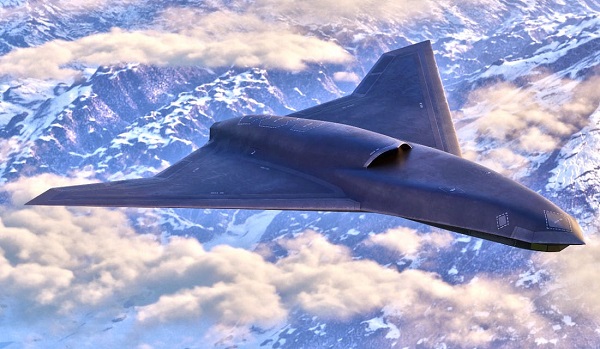
 THE MAKICHUK REPORT
THE MAKICHUK REPORT
Unmanned Vectis to ride shotgun with next-gen fighters
When Lockheed Martin’s super secret Skunk Works© advanced development arm unveils a new project, the aviation world stops and listens.
As always, it is very hush-hush, and, quite often, groundbreaking.
This week’s announcement didn’t disappoint.
It’s called “Vectis” — a stealthy autonomous drone that Lockheed intends to fly by the end of 2027.
As with most Skunk Works projects, officials declined to comment on certain aspects of the aircraft’s design, such as its engine or top speed, though it was noted that Lockheed’s analysis “doesn’t point toward supersonic [speeds]” as a requirement.
What do we know about it, aside from it’s very cool, futuristic design?
The first Vectis prototype is currently “in progress,” and is envisioned as a large “Category 5” reusable drone designed to be customizable to match shifts in the threat environment, said OJ Sanchez, Skunk Works’s vice president and general manager.
“Vectis provides best-in-class survivability at the CCA [Collaborative Combat Aircraft] price point,” Sanchez told reporters ahead of the Air Force Association’s Air Space and Cyber conference in Washington, D.C. “Prototype parts are ordered, the team is in work, and we intend to fly in the next two years.”
According to Breaking Defense, Lockheed sees the range, endurance and flexibility of Vectis’s design as key to its appeal.
It is being developed for the US and international markets based on feedback from multiple customers about the future battlefield.
One has to only look at the Russia-Ukraine conflict, to see that things have changed.
Vectis can carry out mission sets ranging from air-to-air, air-to-ground and ISR, and has an open systems architecture allowing it to interface with platforms and mission systems not built by Lockheed Martin, Breaking Defense, reported.
Certain aspects of the drone — such as which payloads it can carry, or whether it is optimized for regular operations or used less frequently on deployments — can be fine-tuned to meet a customer’s specific requirements.
For instance, “we will have built into it the ability for it to be a daily flyer, reliably work alongside its crew teammates, to be able to integrate into operations for training, as well as for deployment,” Sanchez said.
“At the same time, if the requirement is ease of storage and ease of assembly, it’s absolutely built into the design. … That’s where we’ll work closely to listen with any individual customers and go from there on their operations choice, but the flexibility is built in.”
With the lessons of Ukraine in mind, Vectis is designed to be maintainable in a deployed environment, with a simple design made of “and durable, reliable materials” and easy access to the aircraft’s internal systems if repairs need to be made.
While it has not flown, Lockheed has conducted operational analysis and simulations that paired the drone with the F-22 and F-35, with Sanchez noting that its low-observable signature and communications gear are “compatible” with fifth- and sixth-generation aircraft.
It was also informed by previous experience designing tailless aircraft like the X-44 MANTA, Lockheed’s sixth-generation fighter prototype for the Air Force’s Next Generational Air Dominance program, Sanchez said.
“We’re building in that kind of autonomy, that flexible autonomy, if you will, so that we can work with more countries, more partners, to really listen to what their needs are,” he said.
“That flexibility has been demonstrated through multiple demonstrations. Now we’ll go out and build it, and we’ll work to prove in the open air.”
In the U.S. military’s parlance, Group 5 uncrewed aerial systems are the largest and most capable, covering anything pilotless with a maximum takeoff weight of 1,320 pounds or more, and that can fly at altitudes of 18,000 feet or higher.
When asked, Sanchez declined to offer any hard dimensions or other specifications for Vectis. He did say it was smaller than a Lockheed Martin F-16 fighter, but larger than one of the company’s Common Multi-Mission Truck (CMMT, pronounced ‘comet’) missile-like drones, which is a very broad size range.
According to experts at TWZ.com, renderings of Vectis from Skunk Works show a tailless drone with a lambda wing planform and a top-mounted air intake.
There is a pronounced chine line around the forward end of the fuselage and a shovel-like shape to the nose, as well as various conformal antennas and/or sensor apertures, all of which are indicative of low-observable (stealthy) design considerations.
A short promotional video also includes a cutaway view showing an S-shaped duct behind the air intake and exhaust shrouding, features that offer further radar cross-section and infrared signature reducing benefits.
Vectis’ core planform is interestingly reminiscent, in some broad strokes, of a rendering of a stealthy aerial refueling tanker concept Skunk Works first showed publicly last year.
That aircraft had a much larger design, in line with its intended mission, with large clipped wings that had some lambda-wing attributes, as well as small outwardly-canted twin vertical tails.
There has been something of an uptick in recent years in new crewed and uncrewed tactical aircraft designs with lambda or at least lambda-like planforms.
This includes one of the several air combat drone designs that emerged around a massive military parade in China earlier this month, as well as one of the two Chinese next-generation crewed combat jets that broke cover in December 2024.
Vectis also has “endurance ranges compatible with Indo-Pacific, European, and CENTCOM [U.S. Central Command] theaters,” according to a Lockheed Martin press release.
What munitions and other payloads Vectis might be able to carry is unclear. Skunk Works’ Sanchez mentioned “reusable or flexible payloads,” but did not elaborate.
The promotional video shows a vignette in which the drones, operating together with an F-22, use unspecified sensors to spot and track aerial threats before being ordered to fire air-to-air missiles, presumably from internal bays, at those targets.
Electronic warfare suites and signal relay packages might also be among the payload options for Vectis drones.
Sanchez did not provide any hard cost metrics for Vectis. The Air Force has said in the past that it is aiming for a unit cost roughly in the US$20 million range for drones being developed under the first phase, or Increment 1, of its CCA program.
In discussing how Vectis could be adaptable to multiple U.S. and foreign operator requirements, Sanchez also spoke in more detail about the drone’s current dependence on traditional runways, as well as its ability to operate from more austere locations.
“Our analysis aligns with the U.S. Air Force, that runway accessibility is incredibly important in every theatre, particularly in INDOPACOM [the U.S. Indo-Pacific Command area of responsibility]. So we’re very intentional about the flexibility that this system would enable in the theaters of interest,” Sanchez explained.
“And so the amount of runways that will be available, the amount of flexibility to implement, whether it be an Agile Combat Employment approach, or a hub and spoke for other countries, depending on how it is, Vectis will be very capable in those spaces.”
Exactly how Skunk Works envisions the Vectis will handle counter-drone weapons, such as Israel’s Iron Dome, Iron Beam, or David’s Sling, remains uncertain.
THE MAKICHUK REPORT is free today.
You can tell THE MAKICHUK REPORT that their writing is valuable by pledging a future subscription.
You won’t be charged unless they enable payments.
-

 Red Deer24 hours ago
Red Deer24 hours agoThe City of Red Deer’s Financial Troubles: Here Are The Candidates I Am Voting For And Why.
-

 Business11 hours ago
Business11 hours agoUN, Gates Foundation push for digital ID across 50 nations by 2028
-

 COVID-1912 hours ago
COVID-1912 hours agoThe Trials of Liberty: What the Truckers Taught Canada About Power and Protest
-
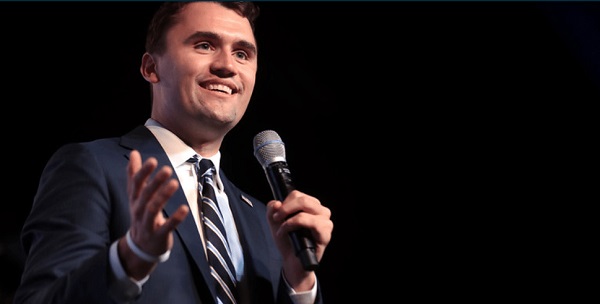
 C2C Journal11 hours ago
C2C Journal11 hours agoCharlie Kirk and the Fragility of Civic Peace
-

 espionage1 day ago
espionage1 day agoPEI to Ottawa: Investigate CCP Footprints—Now
-

 Business2 days ago
Business2 days agoCutting Red Tape Could Help Solve Canada’s Doctor Crisis
-
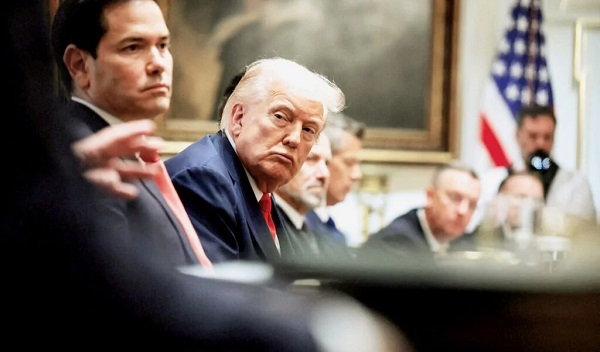
 Bruce Dowbiggin2 days ago
Bruce Dowbiggin2 days agoBrokeback President: We Can’t Quit You, Donald
-
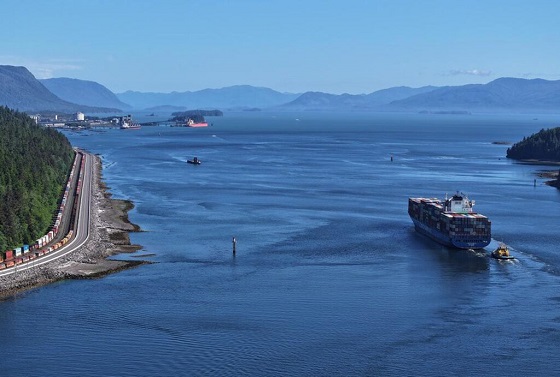
 Energy1 day ago
Energy1 day agoPrince Rupert as the Optimal Destination Port for an Alberta Crude Oil Pipeline –









